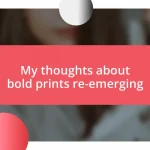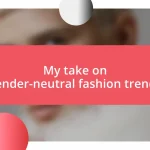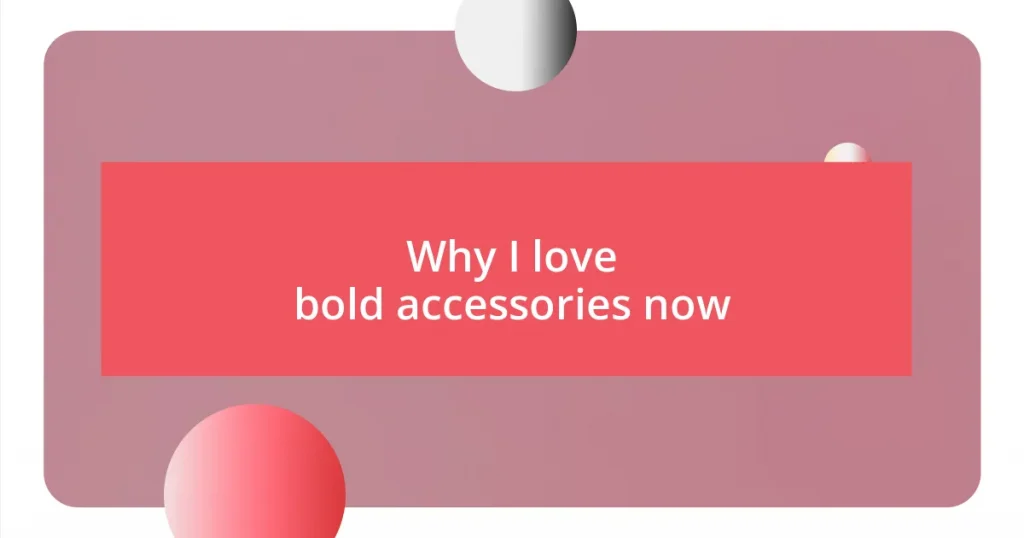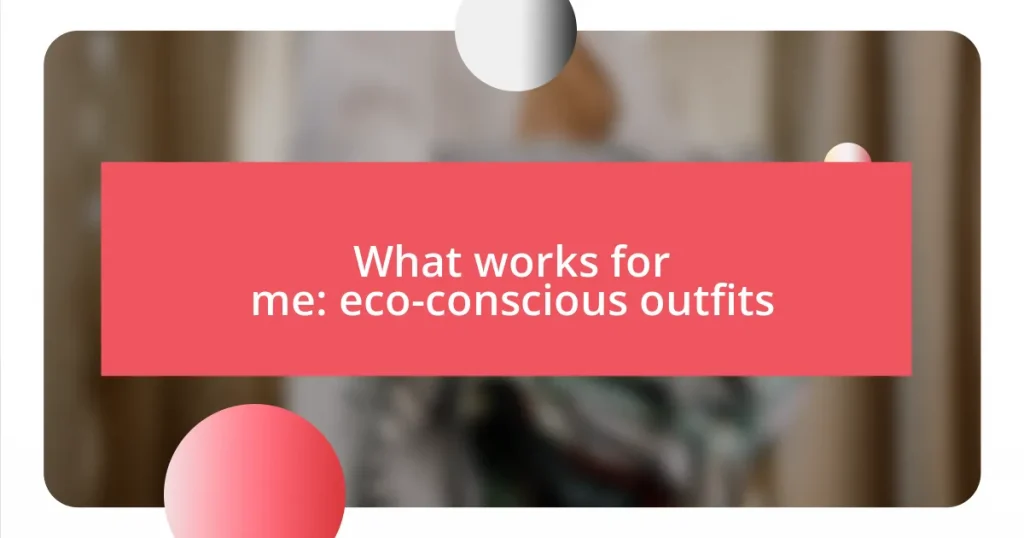Key takeaways:
- Understanding color theory, including the use of the color wheel and color harmony, allows for successful and emotionally resonant design choices.
- Common mistakes in color matching involve over-reliance on a single color, neglecting context, and failing to consider lighting effects on color perception.
- Maintaining color consistency through defined palettes, color sampling tools, and awareness of trends helps create a cohesive and polished design across projects.
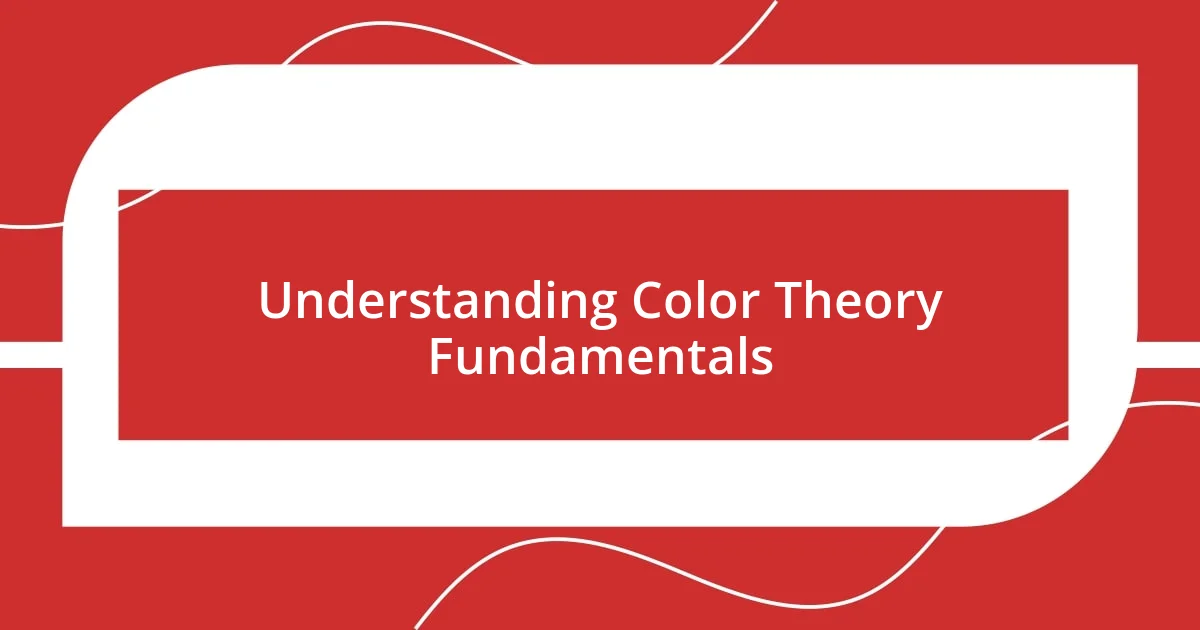
Understanding Color Theory Fundamentals
Color theory is like a secret language, and understanding its fundamentals can be incredibly empowering. I remember the first time I realized how color combinations could evoke specific emotions; it was during a painting workshop. Seeing how a warm palette brightened the room filled me with inspiration and excitement.
At its core, color theory breaks down colors into primary, secondary, and tertiary categories. This classification helps us see how colors interact and complement each other. Have you ever found yourself overwhelmed in a paint store? I know I have! When I started to grasp the relationships between colors, those baffling rows of paint began to tell a story rather than a jumble of choices.
The color wheel is a fundamental tool that organizes hues and shows their relationships. By exploring complementary colors, I learned how opposites on the wheel create striking contrasts that capture attention. Isn’t it fascinating how a well-chosen complement can elevate a simple design into something eye-catching? Each time I use this knowledge, I not only create aesthetically pleasing visuals but also connect emotionally with the audience.
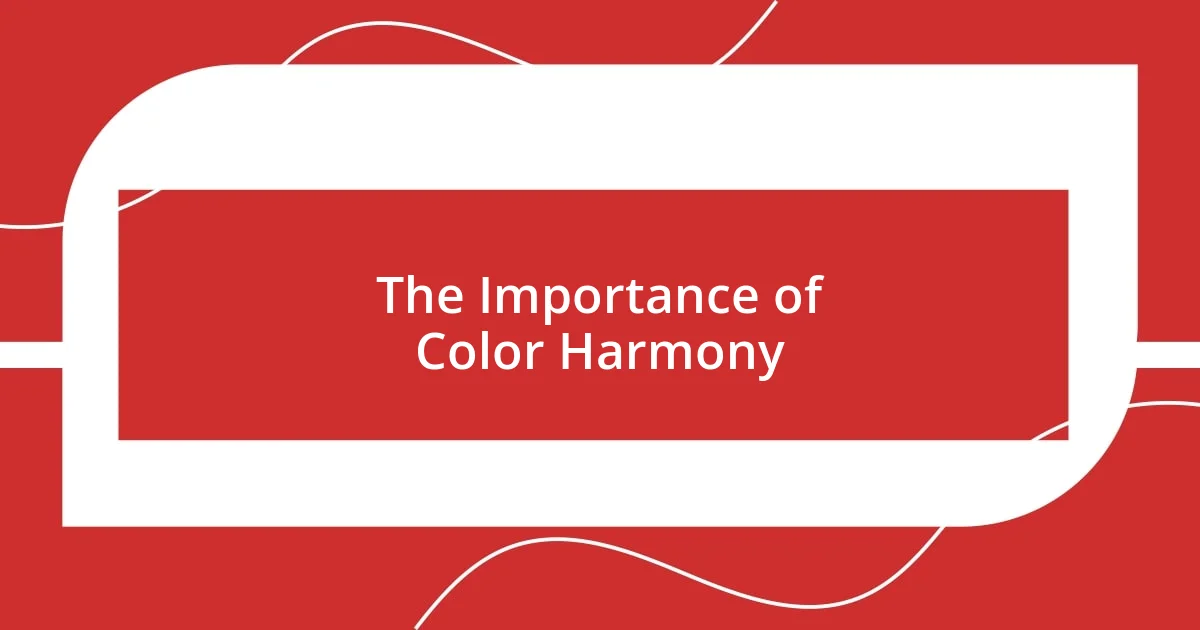
The Importance of Color Harmony
Color harmony is crucial because it creates visual balance and evokes a sense of peace. I remember decorating my living room and grappling with various shades. After trying different combinations, I finally found a soothing palette. The moment I stepped back and saw how the colors worked together, it felt like a calming embrace that transformed the space.
Here are some important benefits of color harmony to consider:
- Emotional Impact: Harmonious colors can evoke specific feelings; for example, blues can create calmness, while yellows can spark energy.
- Visual Balance: Proper color harmony prevents any one color from overpowering the others, leading to a more coherent design.
- Aesthetic Appeal: A well-matched color scheme naturally draws the eye and can make a design feel polished and professional.
- Cultural Relevance: Understanding cultural associations with color can enhance relatability and resonance in design.
- Contextual Fitting: Harmonious colors are versatile; they can adapt to different themes, whether you’re going for a classic, modern, or playful look.
When I apply these principles, I feel like I’m not just choosing colors but composing a visual melody that resonates with those who experience it.
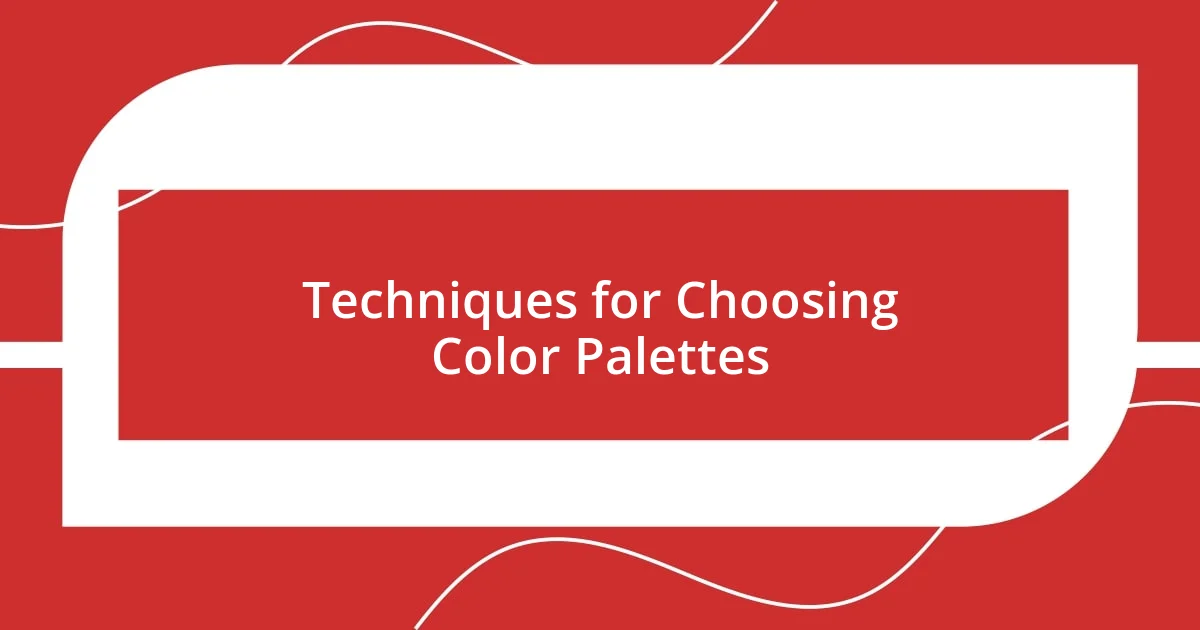
Techniques for Choosing Color Palettes
Choosing the right color palette can feel like an art form in itself. One technique that has served me well is the monochromatic approach. I remember when I decided to redecorate my workspace using varying shades of blue. It created a calming atmosphere that actually helped boost my productivity. This method is straightforward and offers a cohesive look, ensuring that everything feels connected without overwhelming the senses.
Another valuable technique is the complementary color palette. I recall an experience where I used orange and teal in a project. The vibrant contrast energized my work’s visual impact, drawing the viewer’s eye immediately. This technique really teaches us the power of opposites in color theory. You might find that experimenting with complementary colors can lead to unexpectedly stunning results in your own designs.
Lastly, let’s not forget about the triadic color scheme, which consists of three evenly spaced colors on the color wheel. I vividly remember my first attempt using this technique for a friend’s birthday party decorations. The trio of yellow, blue, and red brought such energy and vibrancy to the setting. It’s an exciting way to inject a balance of cheerfulness and harmony into your work. By blending these methods, you can create palettes that resonate with your individual style and the emotions you wish to convey.
| Technique | Description |
|---|---|
| Monochromatic | Using varying shades of a single color for a cohesive and harmonious look. |
| Complementary | Combining colors from opposite sides of the color wheel for dynamic contrast. |
| Triadic | Using three colors spaced evenly apart on the color wheel for vibrant and balanced palettes. |
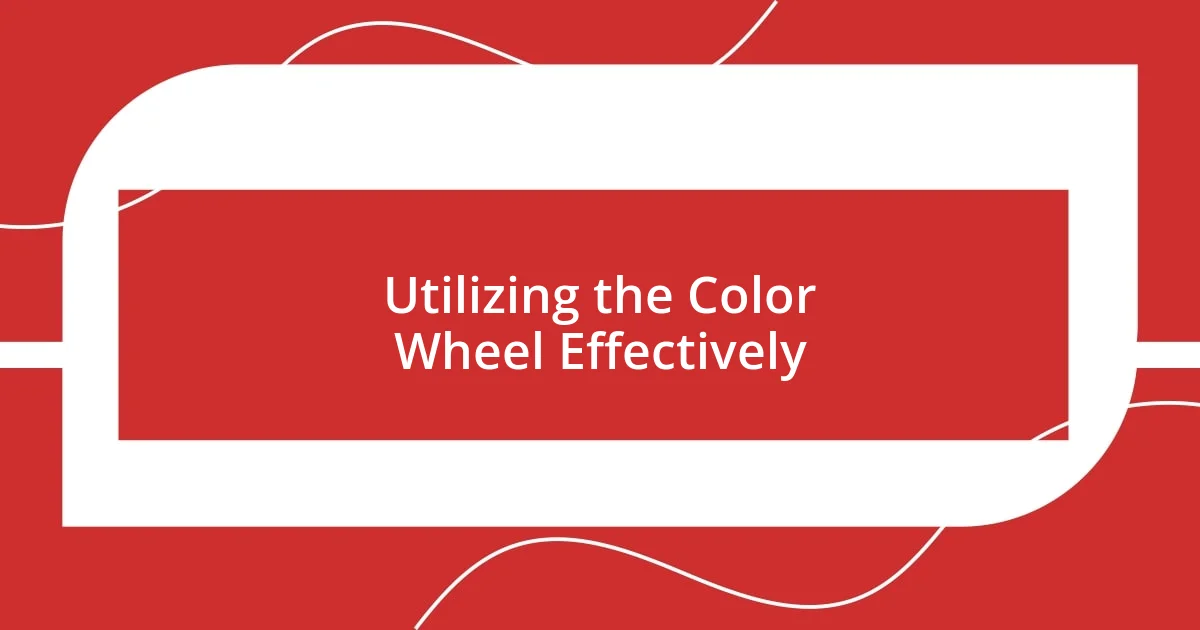
Utilizing the Color Wheel Effectively
When I first encountered the color wheel, it felt like unlocking a treasure trove of possibilities. Understanding the relationships between colors—whether they’re complementary or analogous—has been a game-changer in my projects. I remember a time when I was painting a mural for a community center, and strategically using the color wheel allowed me to select vibrant hues that not only uplifted but also connected with the community’s spirit.
One of my favorite moments was when I paired warm and cool colors to create depth. Striking that balance is essential to making a design feel dynamic yet harmonious. I experimented with a sunset palette—rich oranges intertwined with soft purples—and I noticed how those colors danced together, creating a narrative that drew people in. Have you ever felt a certain combination of colors just seemed to tell a story? That’s the magic of using the color wheel effectively.
Also, don’t underestimate the energy you can cultivate through saturation and brightness. When I was designing the flyer for a local coffee shop, I reached for pastel blues with pops of bright yellow, effectively guiding the viewer’s eye while maintaining a relaxed vibe. It made the whole design feel inviting! Using the color wheel taught me to think critically about each choice. Are you ready to dive into how these color pairings can elevate your next project?
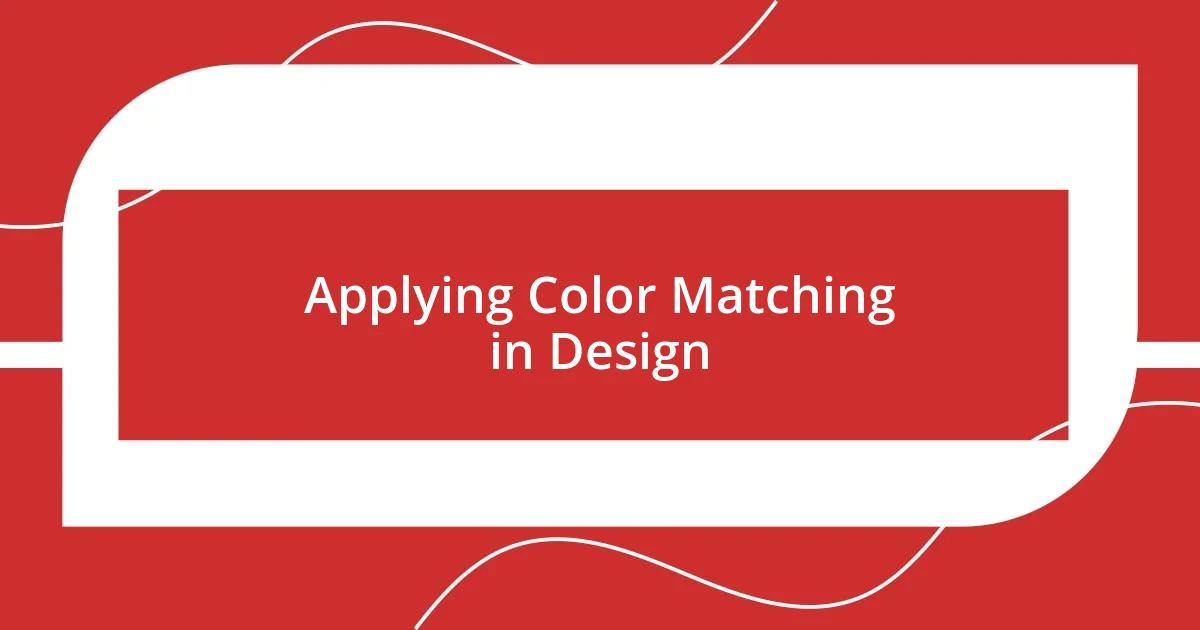
Applying Color Matching in Design
Applying color matching in design is like setting the stage for an unforgettable performance. I vividly remember my first attempt at designing an invitation for a friend’s wedding. I chose a soft palette of blush pink, ivory, and gold accents. The result was more than just beautiful; it perfectly captured the romantic theme they desired. That experience taught me how crucial the right color combinations are in conveying emotions and setting an atmosphere.
Once, while rebranding a local boutique, I experimented by using analogous colors—blues and greens—that evoked a feeling of tranquility and trust. Let me tell you, the owner was ecstatic! It was incredible to see her vision come to life through color. When colors harmonize, they create a seamless flow that allows the viewer to connect with the brand on a deeper level. Have you ever paused to notice how certain colors make you feel?
Moreover, I’ve found that testing out color combinations on digital platforms can provide surprising insights. I recall playing around with a vibrant yellow and deep navy for a logo design, and that spin captured so much energy and confidence! Seeing those two colors together sparked creativity that fueled the entire project. By embracing color matching in design, we can enrich our work in ways that resonate emotionally and visually with our audience. How do you think your design choices reflect the message you want to convey?
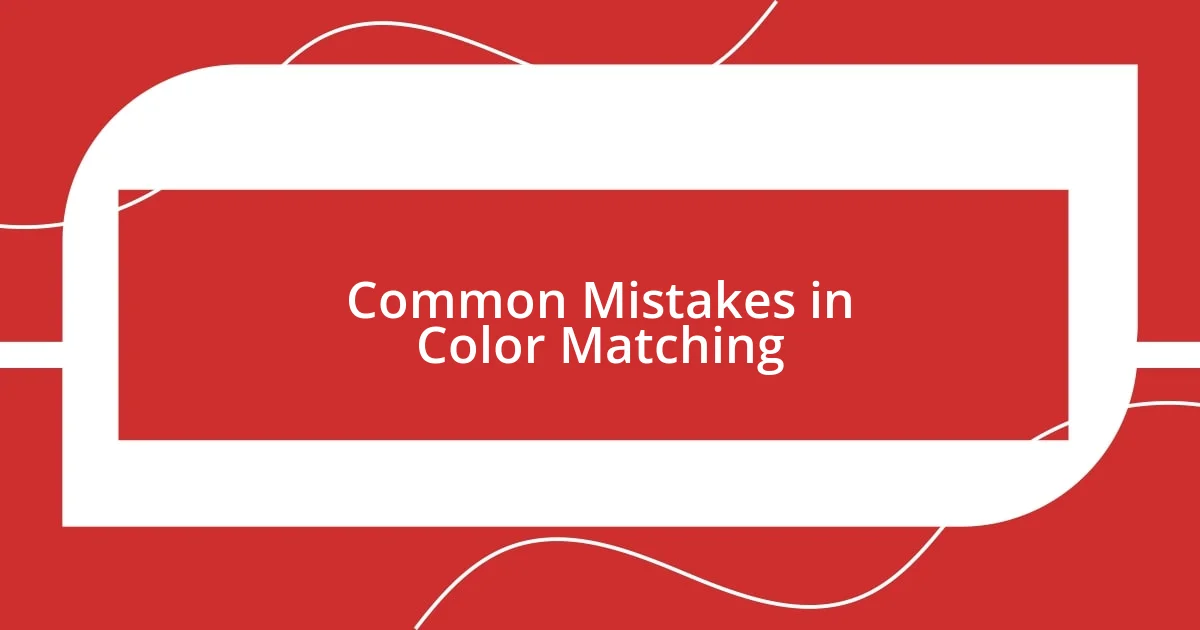
Common Mistakes in Color Matching
One common mistake I’ve noticed is relying too heavily on a single color or shade. In my early projects, I often fell into this trap, thinking that choosing one dominant color would simplify my design. However, I learned that without contrast or additional hues, the final outcome can feel flat and uninspired. Have you ever looked at something and thought, “This feels one-dimensional?” That lack of depth can really dampen the overall impact.
Another frequent error is neglecting the context of the colors. I remember a time when I painted a room using a bold red without considering the furniture and lighting. The result was overwhelming, clashing with everything else in the space. Colors can radically shift based on their surroundings; they can warm or cool a space depending on what they’re paired with. I’ve found that taking a moment to appreciate how different elements interact can save a design from being visually chaotic. Have you had moments where a color somehow just didn’t pop like you expected? Context is crucial!
Lastly, I’ve seen many beginners overlook the significance of testing colors in different lighting. When I was working on a graphic for an evening event, I initially chose a bright palette without realizing how it would look under dim lights. On the day of the event, those colors dulled dramatically, losing their vibrancy. It was a learning moment that highlighted how vital it is to consider the environment in which your colors will exist. Have you considered how lighting can change your color perception in projects? Trust me; it’s a game changer!
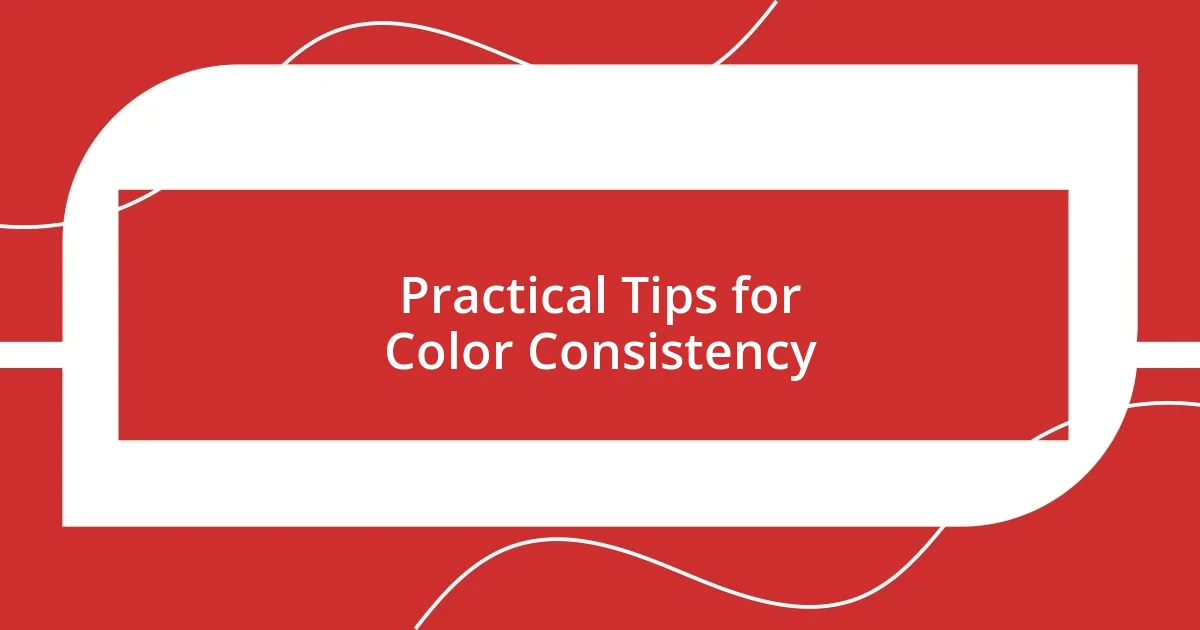
Practical Tips for Color Consistency
To maintain color consistency, I’ve learned that creating a color palette can be incredibly effective. In one of my projects, I compiled a palette with defined HEX codes for a client’s branding, ensuring every designer used the same shades. This simple step made a world of difference, giving the brand a cohesive look across all platforms. Do you think having a set color palette could help with your projects?
Another handy tip is to leverage color sampling tools available in design software. I remember once, while working on a website redesign, I used the eyedropper tool to pull colors directly from images and logos. This technique not only saved time but also ensured that the colors were reproduced accurately. Have you ever relied on technology to keep your color choices consistent? It’s an easy way to enhance your designs.
Lastly, keeping an eye on color trends can really aid in maintaining consistency while staying fresh. During a recent branding overhaul, I studied how popular color combinations were evolving in the market. I discovered that incorporating a trending accent color helped revitalize the brand identity without losing its essence. Have you noticed how trends can influence your color decisions? It’s not just about consistency; it’s about adapting while staying true to your vision.




